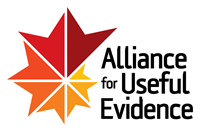How much value do organisations derive from impact analysis?
Karl Demian is a consultant in the not-for-profit sector who since 2008 has helped major organisations such as SENSE and WRVS to restructure. Karl is currently working with WRVS on the second stage of its transformation programme, and is looking at how SROI and other types of impact analysis can be used to drive performance improvement on an organisational level.
How much value do organisations derive from impact analysis? Do they derive any at all? Or is impact analysis simply the latest fashion for the voluntary sector, even as organisations struggle to maintain income levels in today’s difficult economic climate?
Conducting impact analysis can be expensive. It often requires an organisation’s staff to be trained to conduct the analysis, or hiring in consultants to undertake the work. It is also often time consuming, resource intensive and potentially disruptive to an organisation’s normal working practices. And once it is produced, what happens to the report?
Though I don’t doubt the potential value of impact analysis, I do doubt whether every organisation sees a positive return on its investment. There are two main reasons to undertake an impact analysis. One, externally facing, is to help to demonstrate to funders , commissioners and other stakeholders the added value generated by supporting or commissioning the organisation. The other, internal benefit is that is helps the organisation understand how it delivers value, which of its activities are the most effective and how is it achieving its core purpose. Organisations need to be clear as to how they intend to use the analysis before they start the work.
I suspect the focus is often on the external, and my gut feeling is that this often disappoints; either because funders and commissioners may be sceptical or not fully understand the impact analysis, or because the impact itself is simply not relevant or peripheral to the organisation’s desired outcomes. Do others share this view?
For this reason the focus should be on the internal use of impact – that is, helping organisations look at their own performance. It should be used to help re-focus and drive more efficient, effective and ethical use of the organisation’s own resources. This process is often difficult, and rather than improve efficiency, it can often be easier to chase extra resources.
To get the best out of the impact analysis, organisations need to fully commit to learning the lessons from their impact analysis and apply them to drive services improvement, regardless of the views of potential funders. This way, they can derive the best value from the report.
It would also be useful for organisations assess the cost / benefit of the impact analysis at the end of the process, or six months later. Without this, there is a risk that the impact report will simply gather dust, rather than achieving its potential for driving very real and dramatic organisational change.






+44 (0)207 438 2598
[email protected]
Follow us on Twitter
Join us on LinkedIn
Join us on Facebook
Our photos on Flickr
Subscribe to our Feed